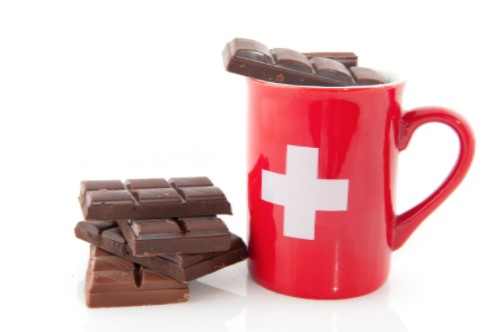
In a Swiss classroom, the language of instruction is Hochdeutsch (High German), the standard textbook-variety of German that one would find spoken in governmental offices and classrooms all across the German-speaking World, including Germany, Austria, and Switzerland. In this classroom, a biology lecture could be swimming along, when the teacher notices that it’s rather cold in the room and says to one of her students: „Stefan, gang bis so guet s Fäischter go zuemache.“ („Stephan, please be so kind as to close the window.“) This sentence, however, unrelated to the biology lecture at-hand, would be spoken in Schwiizertüütsch (Swiss German), a dialect of German almost entirely unintelligible to the standard Hochdeutsch. After Stephan closes the window, the lecture would continue, the teacher reverting back to the standard language of instruction. When she’s teaching, she speaks Hochdeutsch, and when she’s talking directly to her students in a non-professional context, even as a brief interruption, she speaks Schwiizertüütsch. What’s going on here?
This phenomenon, wherein two varieties of a language, a „high“ (formal) and „low“ (informal) variety, are spoken interchangeably by individuals based on their current context, is widely observed throughout Switzerland, as well as other countries such as many Arabic-speaking countries, Greece, and Haiti. This phenomenon, called Diglossia, was first seriously described and researched by Charles Ferguson in his field-changing 1959 article, Diglossia. He describes Diglossia as „a relatively stable language situation in which, in addition to the primary dialects of the language (which may include a standard or regional standards), there is a very divergent, highly codified (often grammatically more complex) superposed variety, the vehicle of a large and respected body of written literature, either of an earlier period or in another speech community, which is learned largely by formal education and is used for most written and formal spoken purposes but is not used by any section of the community for ordinary conversation.“ Nobody in Switzerland speaks Hochdeutsch amongst themselves, but use it as the language of instruction and business because it is the language of academia, literature, religion, and politics.
In Diglossic situations, both varieties exist simultaneously, and are never mixed. This is one of the defining aspects of Diglossia as opposed to other dialect-standard language situations: one is always clear on which variety of the language is currently being spoken, and thus, which social role or function the speaker is accomplishing. This situation is contrasted by the dialect situation in Southern Germany and Austria, in which dialect and Hochdeutsch exist on a continuum, and mix in and out with each other even within a single a sentence. (It’s not uncommon to speak to someone in Austria who begins a sentence in Hochdeutsch and slowly switches to a more regional dialect before finishing it. This would never happen in diglossic situations, such as that of Switzerland.)
Although the varieties are deemed „high“ and „low,“ these labels do not reflect value-judgements about the sophistication of the variety. Schwiizertüütsch is just as complicated and robust of a language as Hochdeutsch, and is different only as a result of the history of its spread and use. Misunderstandings about the differences between the co-existing varieties are common in political and social conceptions of some diglossic situations, such as that of African American English in the United States, which exists as a separate dialect of English, with a distinct grammar, vocabulary, and phonetic system.